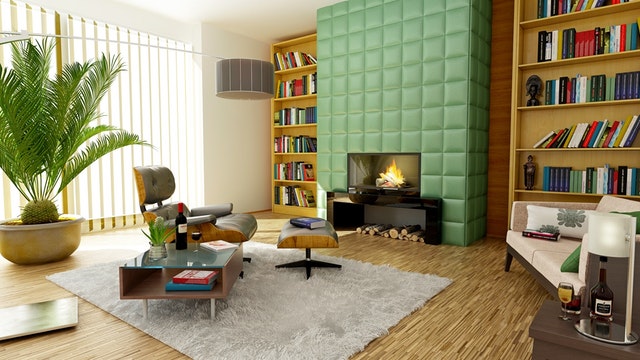Area rugs are one of the essentials after the installation of hardwood flooring. One thing often debated is the use of rug pads underneath an area rug. Professionals have warned against the use of certain pads that might smudge the finish on wood flooring. In this article, we will examine the best type of pad for air quality, discoloration, and rug preservation.
The reality is almost all pads on the market today are imported. Many are high in VVOCs(Volatile Organic Compounds), made from petroleum-based chemicals like PVC which can chemically bond to the polyurethane finishes of your floor. If an inferior pad is left under a rug too long residue can be left behind leading to permanent damage to the floor. Some lower-cost pads or synthetic rubber pads are made with clay fillers which work well initially then break down and turn to dust. Selecting a quality rug pad is essential and can prevent potential problems in the future. Here are some of the top reasons for rug pads:
Safety – the most important purpose of a pad is for safety. Rug pads will keep the rug flat and stationary, preventing any slips or falls from rug movement.
Protection – a pad will prevent the rug from damaging the surface of the floor. Some rugs and carpets are woven on an abrasive secondary backing material which can wear through the finish on your floor if left unchecked. A pad can also prevent any dye transfer from the rug to the floor finish.
Rug preservation – A pad can extend the life of your rug substantially because it will prevent the rug fibers from being flattened or compressed. The rug pad also prevents excessive wear to the back of the rug that can occur when the rug rubs against the hard floor surface. This is especially important with hand-knotted rugs, as the knots are on the back of the rug and need to be protected.
Comfort – Adding a pad increases the thickness of the rug giving a plush underfoot.
Types of Rug Pads
Polyvinyl-based (PVC) – Most lower-cost pads have a PVC composition and have not been analyzed for non-toxic content or VOC emissions. These budget pads can react with the polyurethane finish which can potentially permanently discolor the floor.
Synthetic Latex – Performs well in the short term. Clay fillers are often blended with the latex which reduces manufacturing costs; however, Clay tends to dry out leaving behind a pile of rubber flakes.
100% Natural Rubber – At a medium price range, 100% rubber pads are made from rubber tree sap which is eco-friendly and a safer alternative to petro-based PVC for indoor air quality. True rubber pads offer a non-stick grip on the flooring surface.
 100% Felt Pads – Excellent option for adding cushion to your rug. This pad will work best on larger rugs which would anchor the pad as it lacks the grip of rubber. This material offers the highest density and best underfoot comfort. Often made from recycled materials these can also be an eco-friendly option.
100% Felt Pads – Excellent option for adding cushion to your rug. This pad will work best on larger rugs which would anchor the pad as it lacks the grip of rubber. This material offers the highest density and best underfoot comfort. Often made from recycled materials these can also be an eco-friendly option.
Felt/ Rubber Hybrid Pad– This is the premium rug pad offering the best of both worlds. You are getting the benefit of the cushioned protection of the felt with the gripping attributes of the rubber.
In conclusion, PVC pads are not recommended for use over hardwood floors. Synthetic Latex is a satisfactory option for short-term use but will cost more in the long term due to replacements. Natural Rubber is a great eco-friendly choice with great performance and is suitable for any size rug. Felt Pads offer additional comfort but are rarely suitable for larger area rugs due to the lack of grip. The Hybrid Felt/Rubber will offer the best performance at the highest cost for those looking to match high-end rugs with equally high-end padding.

